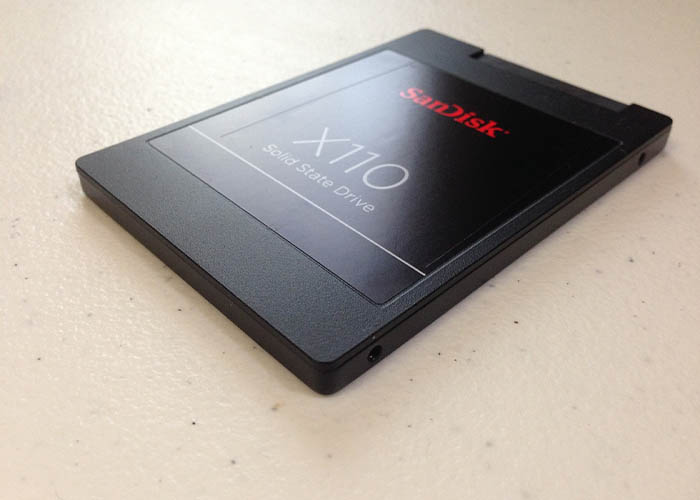An universal confusion for iMac customers is whether they will configure their iMac with Fusion Drive or SSD. Don’t be tensed anymore; we are here to clear your concept about Fusion Drive vs SSD.
After reading this post, you will be clear about the differences between Fusion Drive and SSD. All of the differences, usefulness, bad and good sides, lifespan, and speed of Fusion Drive and SSD are discussed here for you.
You will not get many customization options while buying your iMac except for the storage. So to buy an iMac knowing about its storage is a must. The iMac is a full-fledged computer series from Apple Inc, where you will get regularly updated specs and features.
Apple Mac is configured with different kinds of storage devices such as Fusion Drive, SSD or flash storage drive, and hard drive.
The article will clear you up about how much the Fusion drive costs, and what are the differences between Fusion drives, hard drives, and flash drives.
Fusion Drive vs SSD: A Complete Comparison
The Fusion drive is manufactured to replace the SSD. To better understand, we will represent all of the pros and cons of these two storages. To compare Fusion Drive vs SSD. We will go through a definite process.
Let’s get started with the familiarization with the SSD and Fusion Drive.
Solid State Drive (SSD)
To know about the differences between SSD with other Drives, we have to know about the SSD in detail.
SSD stands for Solid State Drive; it is similarly known as Flash Storage Drive. SSDs are widely used in some premium-quality laptops and ultrabooks. It is a nonvolatile storage device that stores data persistently. It replaces the hard drives and performs the same function as the traditional hard disk drives with more efficiency.
SSD is very high speedy in comparison to the Hard Drives. An SSD will boot up your computer more rapidly, load the necessary programs faster, and will save your files quickly
The reason behind its performance and legibility is that it has no moving parts like the hard drives. The major components of an SSD are a flash controller and a NAND flash memory.
This component is used to give highly optimized read and write taste for the user along with pursuant and indiscriminate data access. In short, you will have great speed, well stability, and longer life, with an iMac consisting of SSD as the storage device.
Fusion Drive:
Fusion Drive is a cross-bred storage drive. Fusion drive is specifically used in Apple devices made by Apple Inc. It is produced by pairing a usual Hard Drive (HD) with a Flash Drive or Solid State Drive(SSD).
You will get an iMac with a long storage capacity of Fusion drive from 1 TB to 3 TB. There will remain a high-capacity hard drive with an intense performance dedicated SSD storage. For example, in iMac 2015 there was a 2 TB Fusion Drive whether 128 GB of SSD. Apple introduced Fusion Drive in 2012 and it has been used since that time.
Fusion Drive is operated by the macOS operating system. The macOS store the repeatedly accessed data with the OS itself, and various apps on the SSD part of the Fusion Drive.
Consequently, repeatedly used data access becomes very quick. And less frequently used files and data are stored in the HDD part of the Fusion Drive. As a result, Fusion Drive users always get a great mixing experience of speed and size.
Read More: Fusion Drive, Pros, And Cons, Failure Symptoms, Problem And Solve
What are the differences between Fusion Drive and SSD?
Though the Fusion Drive is made by mixing up a bigger HDD and a faster SSD, there are several differences in their properties, functioning, and performance.
The differences in the price:
The main difference between the Fusion Drive and SSD is in their price. A fusion drive is much less costly than a pure SSD. If you want to get large storage with high speed and solid performance at an affordable price, Fusion Drive might be the best choice.
Because the SSD will cost a huge amount compared to the Fusion drive. More specifically, a 2TB Fusion Drive will cost exclusively $125, whereas a merely 256 GB SSD will cost around $60.
Fusion Drive vs SSD in case of Speed:
Fusion Drives have great speeds in comparison to the HDD, but it is less than a pure SSD.
If we compare the read and write speeds, Fusion Drive is much slower than the traditional SSD. For instance, imagine 1 GB of files will be transferred between these two. You will see that the writing speed of the Fusion drive is slower than the SSD. The writing speed of the Fusion drive is about 430MB/s and the reading speed goes up to 1250MB/s.
On the other side, the writing speed of the SSD is almost 1900MB/s, and the reading speed is above 1650MB/s which is better than the Fusion Drive.
Similarly, the video exporting speed of the Fusion drive is also lower than the SSD. Despite, being at a lower speed than the SSD, people buy it considering its affordable price.
However, everyone knows that great performance always demands a greater cost. Hence, little low performance of Fusion Drive is considerable with its price.
More efficiently, storage choices should be done based on your workload and obviously on your budget.
If you need to do a lot of video editing tasks, you should buy a PC that must be configured with an SSD. It will cost more than the Fusion Drive but will improve your work speed and accuracy tremendously.
On the other hand, if you use your PC only for basic tasks like writing, reading, browsing, etc, you definitely can choose a Fusion Drive customized iMac. It will save a hefty amount of money.
These are the most important discussions on solid-state drive vs Fusion Drive. Furthermore, to make it more clear. Let’s see some other points:
Flash drives have a good boot-up time. But it is less than the SSD.
A fusion drive is noisier than an SSD. Of course, that will not be much disturbing during the use of the iMac.
Fusion drive has a long-range storage capacity from 1TB to 3TB. That is much more than the SSD.
Fusion Drives are only compatible with Mac Devices, but SSD is universally used.
The Fusion Drive has less RPM than the flash storage Drive.
For better understanding, let’s see a 2TB fusion drive vs an SSD in terms of cost and speed in the below table:
| Parameters | Fusion Drive | Solid State Drive |
| Writing Speed | 700 MB/s | 1.9 GB/S |
| Reading Speed | 2 GB/s | 2.5 GB/s |
| Costs | 2 TB Fusion Drive costs $125 | 256 GB costs around $60 |
The above are the vast comparisons between solid-state drives vs fusion drives.
Read More: How To Recover Data From A Fusion Drive?
Fusion Drive vs Hard Drive:
After reading the above about Fusion Drive and Solid State Drive, you may become curious about getting a Hard Drive. Now we will see the comparison between the Fusion Drive and the Hard Drive.
Before going to the comparison chapter, let us know details about the Hard Disk Drive as it is the new storage item in the controversy.
Hard Drive:
The hard drive is the oldest, most common, and cheapest data storage device. In 1956, the IBM company first introduced the drive to the universe. It was the earliest and most used electro-mechanical storage device. The Hard Disk Drive reads and writes data from the mechanical components.
That means it is not a fully electronic data storage device. It is a non-volatile storage device which means it stores data when the device is turned off. It is usually used in mobile devices, desktop computers, consumer electronics, and data centers.
Comparison between Fusion Drive and Hard Drive as some bulleted points:
- It is slower than the Fusion Drive because the HDD uses mechanical components for its functioning. The read and write speeds of HDD are from 80MB/s to 150MB/s, which is much lower than the Fusion Drive.
- HDD is cheaper than the Fusion Drive.
- The storage capacity of the HDD is much higher than the Fusion Drive.
- Hard Disk Drive makes more noise than Fusion Drive.
- HDD takes up more space inside your device than the Fusion Drive.
- Fusion drives have a less physical damage tendency than HDDs.
- HDDs are not as good as Fusion Drives to respond in case of frequently used data.
These are some of the basic differences between the Fusion Drive and Hard Disk Drive.
We still think you have some other questions about the Fusion Drive in comparison with other drives. To satisfy all your curiosity, some FAQs are given below:
What’s better SSD or Fusion Drive?
As we already mentioned that the Fusion Drive is cheaper than the SSD, but its overall performance and speed are not as good as the SSD. If you are not a heavy user of a PC, you can configure your device with Fusion Drive without any confusion. It will give you a large storage capacity to store your necessary files and data.
Is Fusion Drive SDD or HDD?
Fusion Drive is not either the SDD or neither the HDD. It is the combination of an SDD and an HDD. A definite quantity of HDD is mixed up with the SDD to make it. Hence, the Fusion Drive shows the properties of both of them.
Can I replace iMac Fusion Drive with SSD?
The short answer is no, you can’t renovate the Fusion Drive with the traditional SSD. Because the Fusion Drive is attached to the motherboard by soldering. So, any experiment to rebuild the Fusion Drive can badly damage your iMac.
What is the difference between Flash Storage Drive and Fusion Drive?
A Flash storage drive is technically a Solid State Drive. The difference between a flash storage drive and an SSD is like eggs and omelets. Most of the SSDs are flash memory, as the omelets are of course eggs.
So it is clear that all of the flash memory is SSDs, but all SSDs are not flash memory. The only difference is in their applications. The flash storage drives are similarly faster, non-volatile, and solid storage drives like an SSD.
Flash Storage is also an SSD. Therefore, the differences between the Flash storage drive and Fusion Drive are also the same as the difference between the SSD and Fusion Drive.
As we already discussed on Apple Fusion Drive vs SSD. So the discussion on Apple Fusion Drive vs Flash memory is unnecessary. Please look at the above for a better understanding.
Is Apple Fusion Drive Good?
Yes, Fusion Drive is a great alternative to the high pricy SSD. Its performance and price are between the performance and price of SSD and HDD. If you are a mid-range user with a low budget, you can go for the Fusion Drive.
Verdict:
So now we are at the end of our dispute on Fusion Drive vs SSD. All of our efforts were to support you in making a proper decision during the customization of your iMac. We not only represented the differences between Fusion Drive and SSD but also between the Fusion Drive and HDD.
We hope you are now ready to make a better choice on data storage selection. And if you fall into any problem with your storage like data loss and damage, Data Recovery Station is always with you for better experiences.






